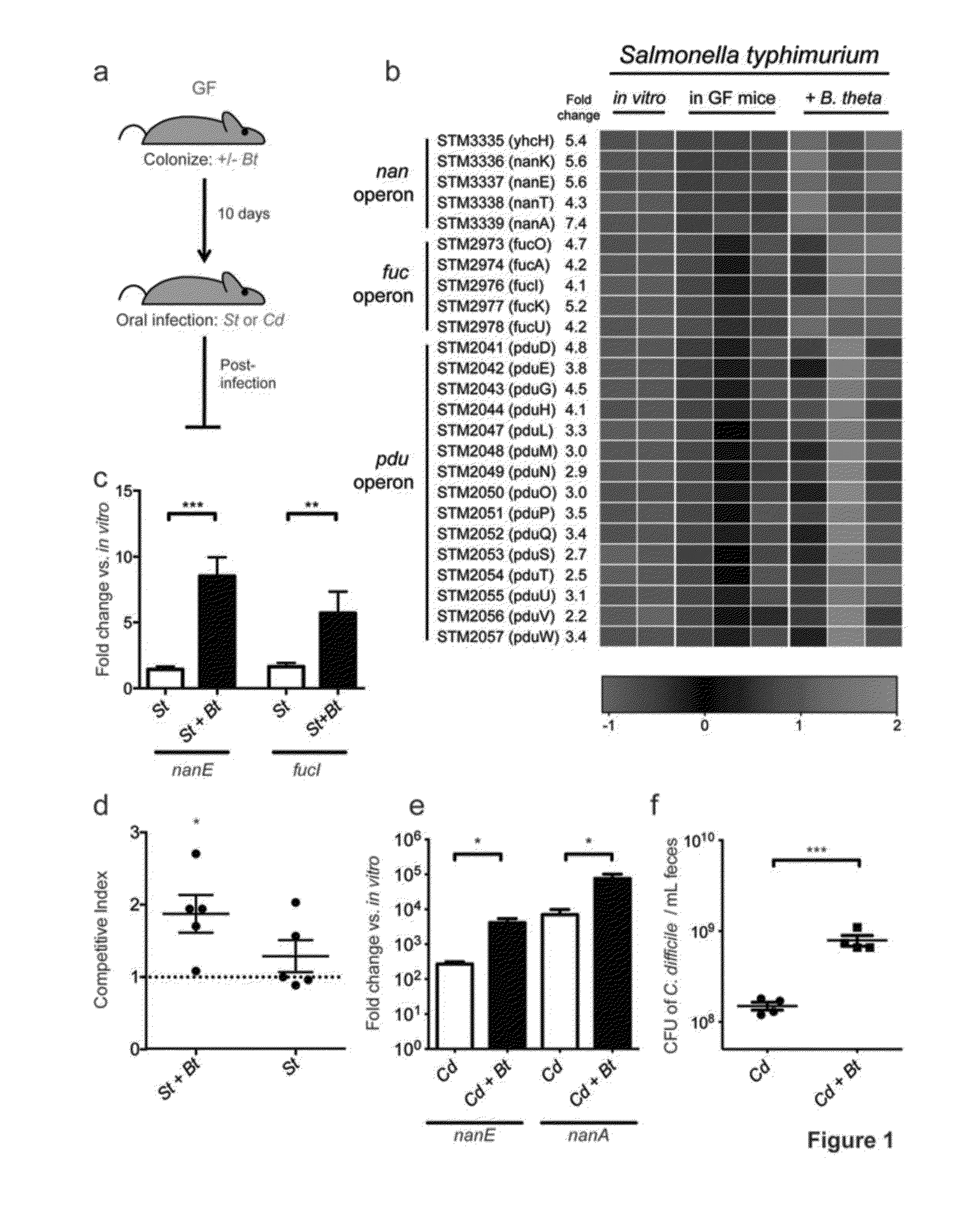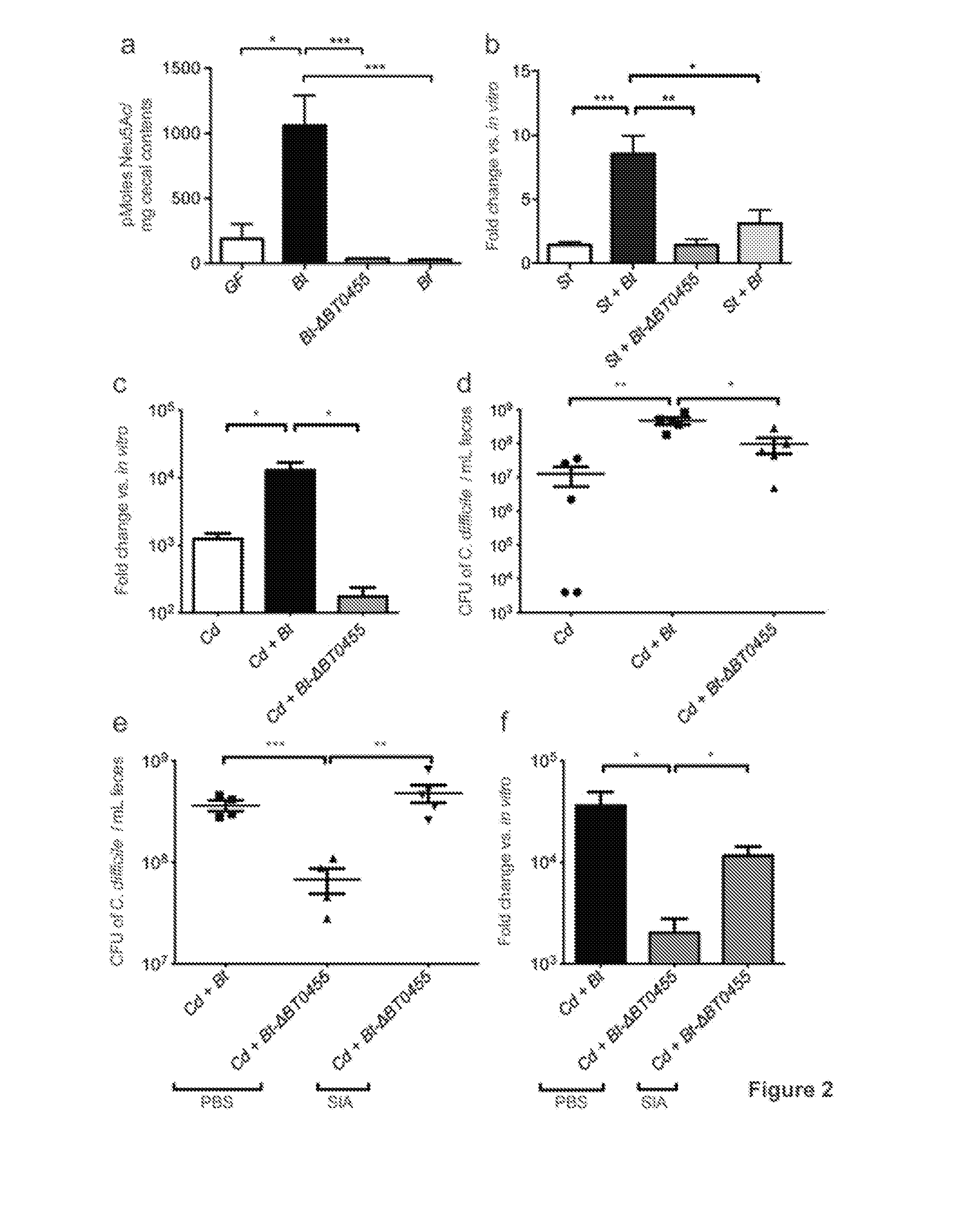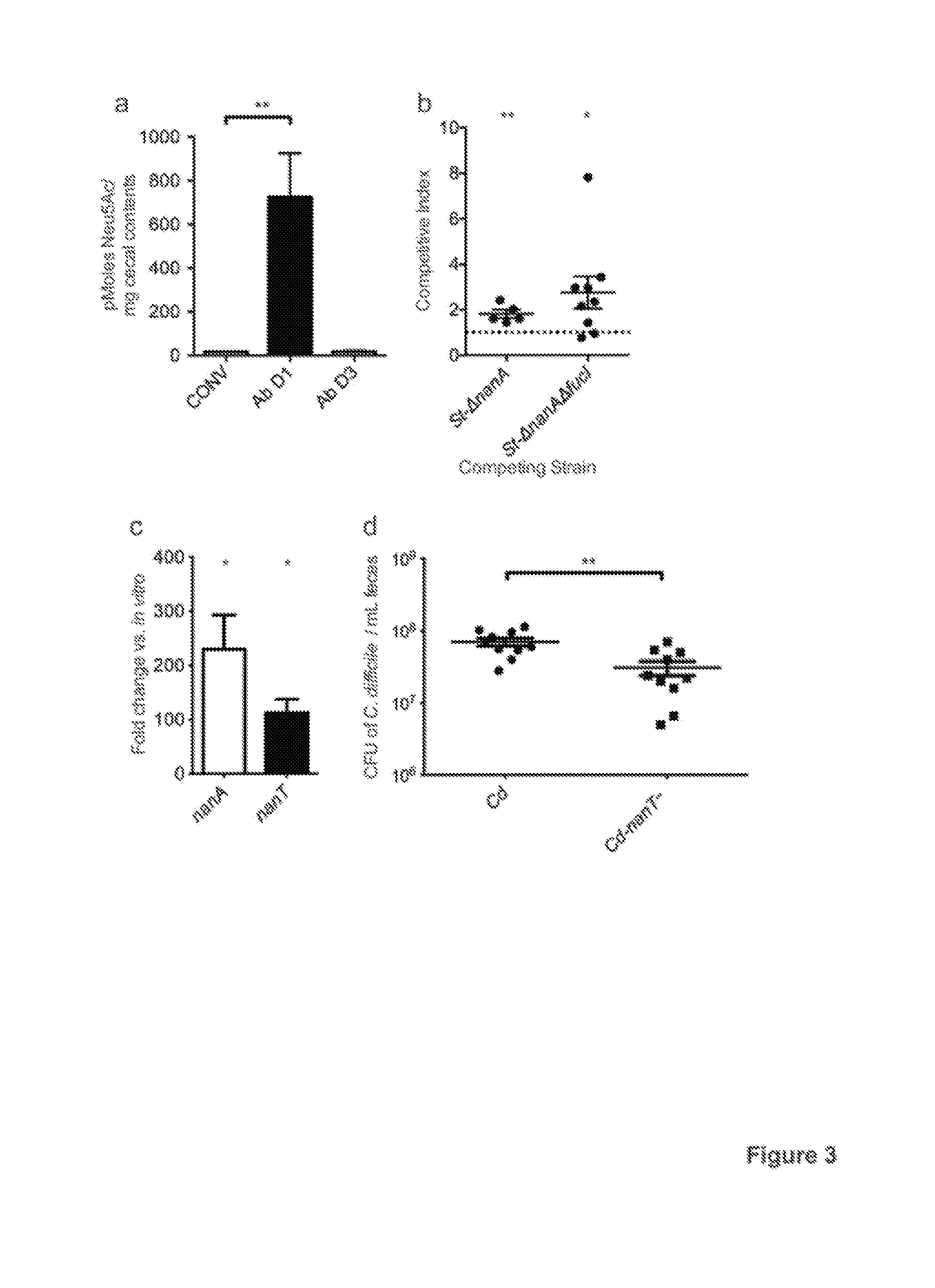Nutritional and metabolic approaches to prevent emergence of enteric pathogens
a metabolic and nutrient-based technology, applied in the field of therapeutic formulations, can solve the problems of affecting the microbiota of the target, nutrient availability is limited, and the disruption of the microbiota with oral antibiotics often precedes the emergence of enteric pathogens, so as to facilitate the reaction between the target and the targ
- Summary
- Abstract
- Description
- Claims
- Application Information
AI Technical Summary
Benefits of technology
Problems solved by technology
Method used
Image
Examples
example 1
[0072]The human intestine, colonized by a dense community of resident microbes, is a frequent target of bacterial pathogens. Undisturbed, this intestinal microbiota provides protection from bacterial infections. Conversely, disruption of the microbiota with oral antibiotics often precedes the emergence of several enteric pathogens (Doorduyn, Y., et al. Epidemiology and infection 134, 617-626 (2006)) (Pavia, A. T. et al. The Journal of infectious diseases 161, 255-260 (1990)) (Pepin, J. et al. Clin Infect Dis 41, 1254-1260 (2005)) (Kelly, C. P., et al. N Engl J Med 330, 257-262 (1994)). How pathogens capitalize upon the failure of microbiota-afforded protection is largely unknown. Here we show that two antibiotic-associated pathogens, Salmonella typhimurium and Clostridium difficile, employ a common strategy of catabolizing microbiota-liberated mucosal carbohydrates during their emergence within the gut. S. typhimurium accesses fucose and sialic acid within the lumen of the gut in a ...
PUM
| Property | Measurement | Unit |
|---|---|---|
| pH | aaaaa | aaaaa |
| total volume | aaaaa | aaaaa |
| flow rate | aaaaa | aaaaa |
Abstract
Description
Claims
Application Information
 Login to View More
Login to View More - R&D
- Intellectual Property
- Life Sciences
- Materials
- Tech Scout
- Unparalleled Data Quality
- Higher Quality Content
- 60% Fewer Hallucinations
Browse by: Latest US Patents, China's latest patents, Technical Efficacy Thesaurus, Application Domain, Technology Topic, Popular Technical Reports.
© 2025 PatSnap. All rights reserved.Legal|Privacy policy|Modern Slavery Act Transparency Statement|Sitemap|About US| Contact US: help@patsnap.com



